Bring on the Snow: An Expert Guide to Shopping for Winter Boots

With winter here and snowbirding on hold, we ask the experts for advice on finding the perfect winter boot and ask them for a few of their favourite picks. Photo: SrdjanPav/Getty Images
Canada truly is a winter wonderland but one that also comes with ice and snow and slippery sidewalks. It’s still important to get out, get some fresh air – and get those steps in. But for many snowbirds who have been spending winters in sunny climes, it’s also a bit of a challenge, especially if you haven’t stepped into a pair of boots in years.
“Picking the wrong boot could lead to foot agony and damage,” says Neil Naftolin, a doctor of podiatric medicine and the president of the Ontario Podiatric Medical Association (OPMA). “Choose a pair of boots with a cushioned, removable insole, a deep heel cup and slip-resistant bottom treads”– especially if you have to accommodate custom orthotics. Don’t be tempted to size up as too much movement of the boot can cause sores, he adds. “Sticking to your everyday shoe size should be fine, but it also depends on the style and make of the boot.”
We asked a few authorities from a top osteopath to product experts who specialize in footwear and outdoor gear to give us a few tips on what to look for when shopping for a winter boot.
The Osteopath’s Opinion
“Navigating the world of winter boots can be perplexing,” says Dr. Liza Egbogah, the Toronto-based manual osteopath, chiropractor, myofascial release therapist and clinic director of the[fix], who also specializes in body and posture. “With so many options on the market but so little education around what to actually look for and why, it can be hard to know where to start when making this investment.”
With these tips, says Dr. Liza, you can step into your next (likely, virtual) shopping trip to buy winter boots that will actually do their job and keep you safe during the snowy season.
1. Grip The sole of a winter boot should be anti-slip, which usually consists of a ridged rubber sole. If you really want to reduce your risk of slipping, I recommend a sole with an abrasive surface like small spikes or shards to make walking on icy surfaces easier.
2. Warmth It’s important that your winter boots are waterproof and lined to keep your feet warm. Opting for boots that are lined with shearling or a similar material will help to prevent frostbite and will make your time outside more comfortable.
3. Support While most winter boots are quite sturdy, you also want to look for support around the ankle and arches of your feet. If you can easily bend or twist your boots then they are not providing your feet with the support they truly need. Having support during the winter is essential, especially as the extra clothing and layers we wear adds weight to the body. This, paired with icy terrain, can result in the straining of feet and leg muscles; an orthotic insole with arch support can help to prevent this.
4. Accessibility When we think of footwear, we mostly associate the wrong footwear with foot pain. However, if your boots are not easy to take on and off, this in itself can lead to injuries in other parts of your body, such as the back and shoulders. The best bet is to find boots that are easy to slip on and off, such as those with a velcro strap. This is also beneficial for those with arthritis who may create a potential slipping hazard if laced boots become undone and they are unable to tie them back up again while out. www.drlizaegbogah.com
The Expert Shopper
Kristin Nelson, director of merchandising, Mountain Equipment Co-op (MEC), gives us her picks of boots that stand the test of wintertime.
1. Checking the outsoles is important. Look for winter footwear with outsoles meant for winter and ice. Arctic Grip is a great choice, but many brands have their own version. If you live in icy/wet climates, then having a rubber outsole or added traction built in does add safety. Click here to check out iDapt for outsole ratings.
2. I particularly like the slip-on options for when you need to take out the garbage, walk down the driveway, etc., if there is risk that you’ll slip. Keen has options that have great ankle support and roomy fit for stability, but they are also really versatile for walking/hiking/snowshoeing. Zippers and elastic Chelsea boot slip-on styles are great when you have reduced capacity to be reaching down and lacing your boots all the time.
3. Check that the insole is removable. That way you can customize the fit by adding an insole or orthotic. There are also great wool insoles to add warmth and heat. Oboz O Fit Insole with thermal medium arch, Blundstone sheepskin footbeds and Yaktrax thermal insoles are all good unisex options. Wool inners are going to naturally combat odour, but synthetic can be lighter.
4. Having a boot in a mid-height with laces can add support to ankles. I love the boots that have laces and with zippers, so you can customize fit and support for the ankle but have the easy on-off as well. Kodiak, Cambridge and Sorel have good options. If you are worried about stability, go for a higher lace-up boot that protects the ankle more.
5. Traction devices are great to keep in purses and pockets. They can be slippery when walking indoors on tile (like in a mall), so having a removable option is great. Safe on ice but easy to stow when heading indoors. There are great options from Kahtoola, Stabilicers, Yaktrax and Life-sports.
Top Boot Picks from MEC
For Her: Whitney II short lace-up boot, $150
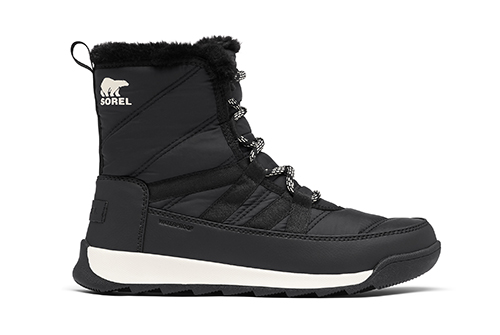
For Him: Kodiak Rhode II arctic grip insulated boot, $200
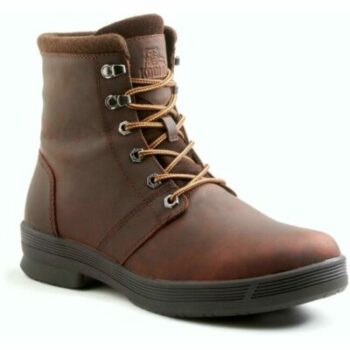
The Tread Expert
“Traction is, in my opinion, the most important feature of a winter boot,” says Iain Summers, VP industrial, footwear and accessories at Mark’s, a subsidiary of Canadian Tire known for fashionable work wear and work boots. “Finding a slip-resistant boot is crucial for Canadian winters, where you’ll often find yourself walking on various combinations of ice, snow and slush on any given day.” Functional fact: Mark’s has worked with iDAPT at the Toronto Rehabilitation Institute to test the anti-slip abilities of our footwear through their Rate my Treads initiatives.
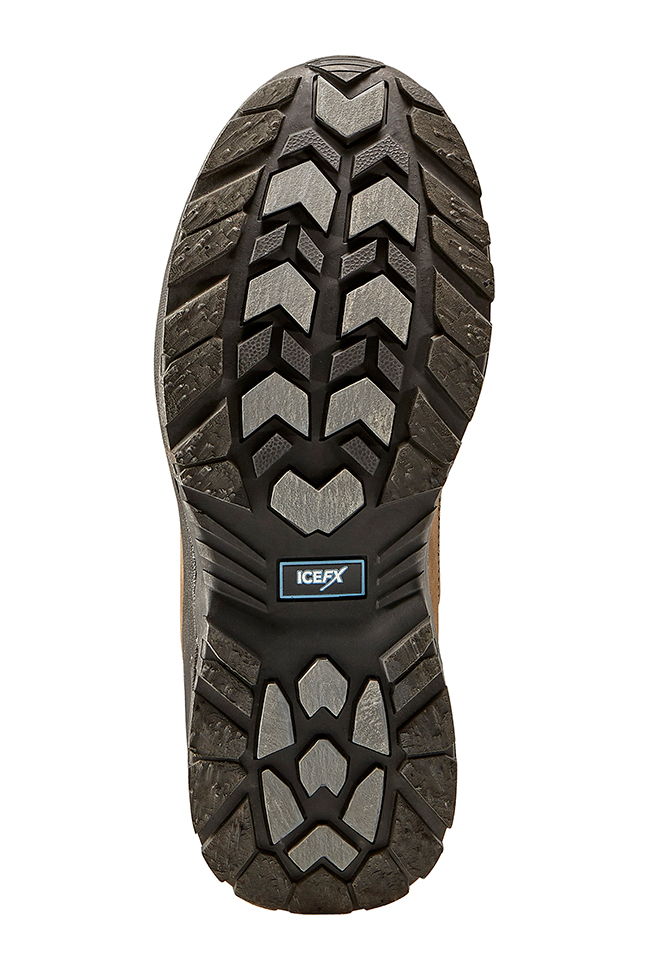
His Sole Recommendations
Look for boots with a Vibram Arctic Grip, Green Diamond or IceFx sole. “Mark’s carries boots that are subjected to rigorous testing in harsh environments to help identify boots that are less likely to lose grip on snow and ice,” he notes. Boots that pass the tread test, he adds, are easily identifiable in-store by a hangtag outlining the testing and the boot’s rating. The testing involves real people walking up and down a slope made entirely of ice while the angle slowly increases.
Top Boot Picks From Mark’s
Denver Hayes women’s IceFx HD3 waterproof boots, $160
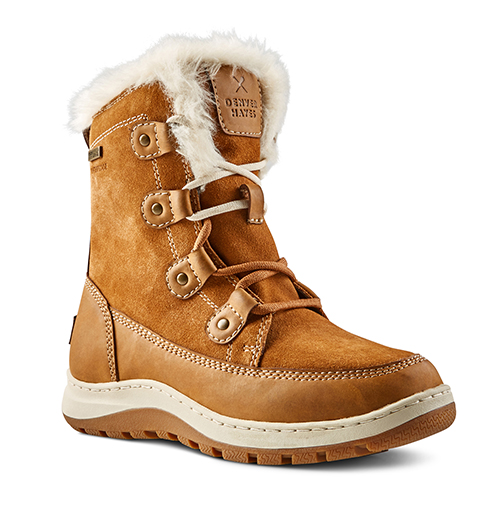
Windriver men’s Rundle IceFxX HD3 waterproof boots, $190
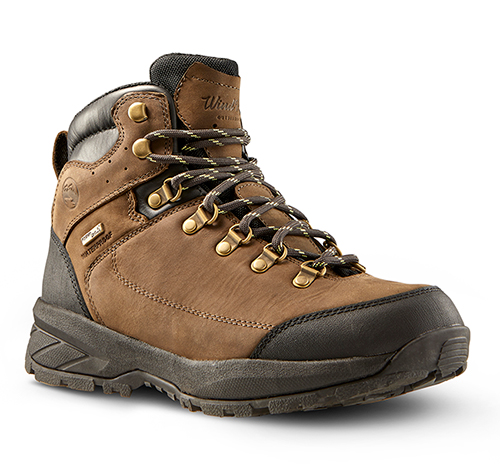
The Tech Talker
Since 1963, Denmark’s ECCO has been designing functional and fashionable footwear and leather accessories. We asked ECCO ’s product manager Jill Butler to give us a glossary of technology used in the best shoes and boots. “Style should never outweigh the functionality of a winter boot purchase,” she notes. When looking to buy, advises Butler, some key components to factor in should be:
1. Prima Loft A lining that provides warmth and insulation (something that is built into ECCO boots)
2. Gore-Tex/Hydromax Weatherproofing technologies to stop the wetness
3. Mobility Support is important but not so stiff
4. Tread Always opt for deep rubber treads to provide the most grip
5. Phorene A mid-sole component that maintains its comfort and bounce up to –40 C, key to maintaining boots’ comfort
6. Weight Lightweight is important. We layer enough in the winter months; the snow is deep and already acts as additional resistance.
Top Boot Picks From Ecco
For Her: Ecco Solice water-repellant side-zip boot (also comes in tan), $280
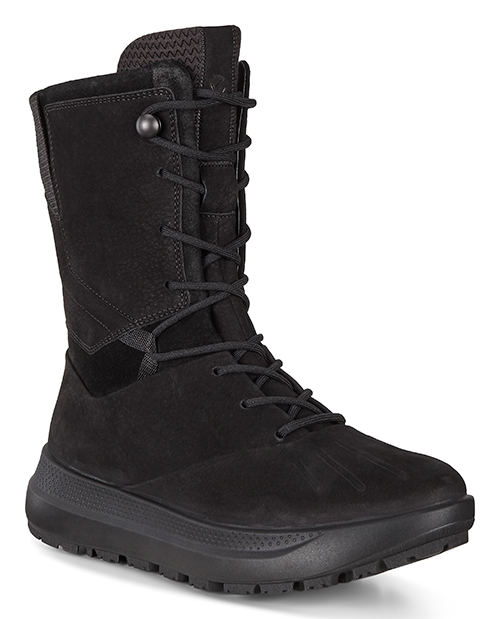
For Him: Ecco Tredtray urban hiker (also comes in black), $290
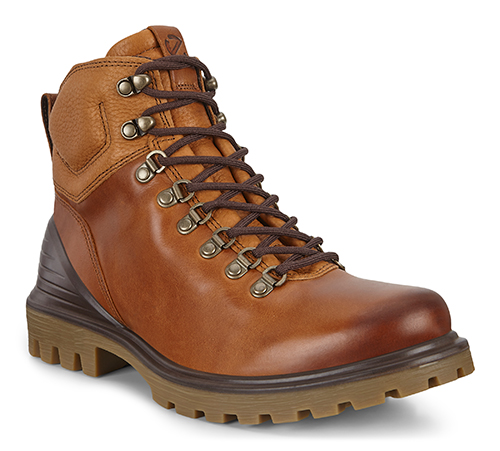
For more on getting the proper fit and a guide to winter foot care, click here.
RELATED:
Zoomer-Friendly: Olang, The Winter Boots That Grip
Ask a Fashion Editor: How to Find Festive Holiday Dresses With Sleeves